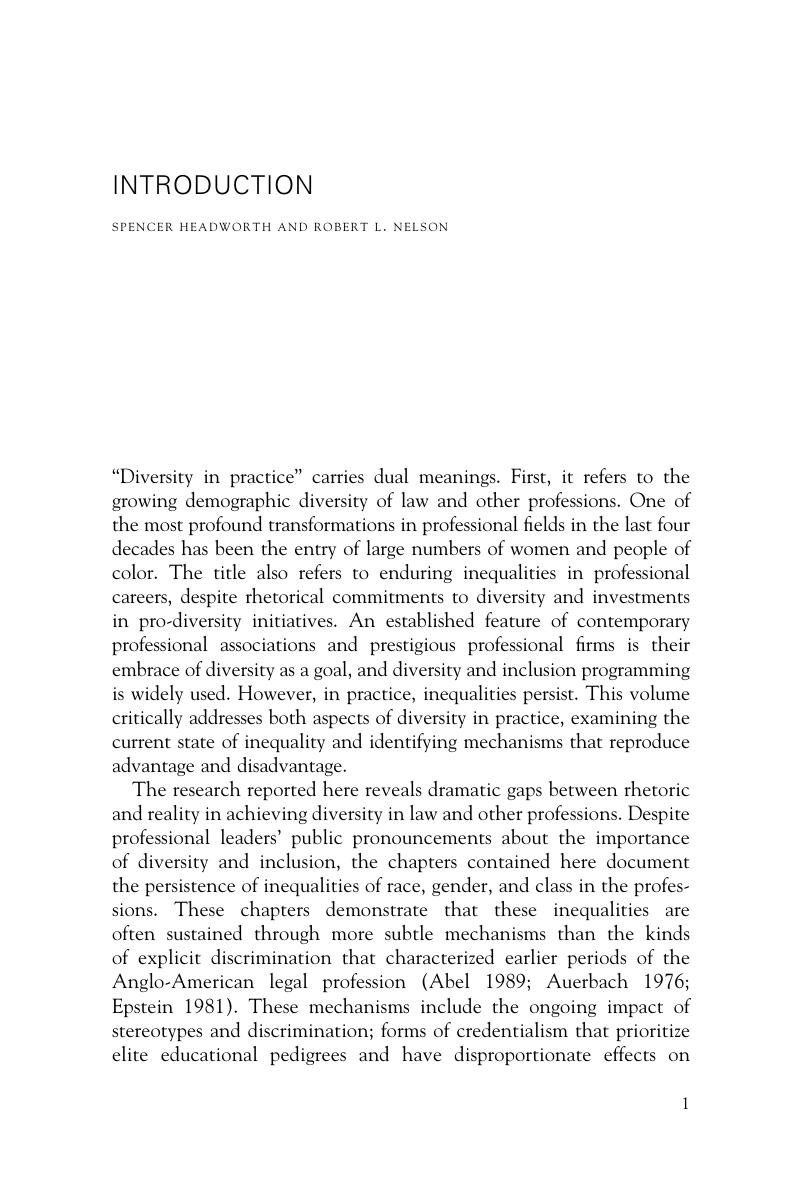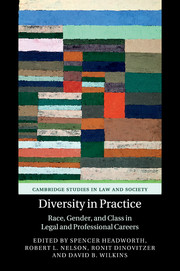Book contents
Introduction
Published online by Cambridge University Press: 05 April 2016
Summary

Information
- Type
- Chapter
- Information
- Diversity in PracticeRace, Gender, and Class in Legal and Professional Careers, pp. 1 - 34Publisher: Cambridge University PressPrint publication year: 2016
References
Accessibility standard: Unknown
Why this information is here
This section outlines the accessibility features of this content - including support for screen readers, full keyboard navigation and high-contrast display options. This may not be relevant for you.Accessibility Information
- 2
- Cited by
